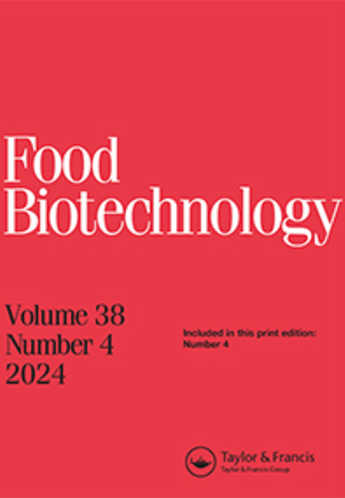基于实时pcr的物种定量测定-结果可以用重量/重量当量表示吗?
IF 1.6
4区 农林科学
Q4 BIOTECHNOLOGY & APPLIED MICROBIOLOGY
引用次数: 0
摘要
摘要食品掺假是肉类行业面临的一个普遍挑战。聚合酶链式反应(PCR)已被用作检测不同种类肉类污染的方法。从消费者的角度来看,根据重量/重量(w/w)比进行测量的PCR方法将更为熟悉。在这项研究中,重点是如何使用实时PCR将定量分析结果从基因组/基因组(g/g)转换为w/w。对猪肉中不同比例羊肉的混合物进行了分析。建立并评估了不同物种的c值,作为关键转化因子的反映。还评估了热处理对PCR数据w/w转换的影响。结果表明,c值在各个样本之间表现出显著的可变性。在20–80%的范围内,发现平均c值会导致混合物偏差超过7%。对于具有预先确定的c值的单个肉类样本,实时PCR可用于在20-80%范围内定量分析猪肉中的羊肉污染,检测偏差小于2%。然而,该方法被证明对猪肉中的羊肉有5%的定量限。此外,热处理(121°C,15分钟)显著降低了定量分析的准确性。由于c值不适用于大多数商业样品,并且一些食品经过热处理作为一种杀菌方法,因此使用基于PCR的技术对商业样品进行精确定量分析(w/w)可能不是一种选择。本文章由计算机程序翻译,如有差异,请以英文原文为准。
Quantitative species determination based on real time PCR–Can the results be expressed as weight/weight equivalents?
ABSTRACT Food adulteration is a common challenge in the meat industry. Polymerase chain reaction (PCR) has been used as a method to detect contamination from different species of meat. From a consumer perspective, a PCR method with measurements in terms of weight/weight (w/w) ratios will be more familiar. In this study, the focus was on how to convert the results of quantitative analysis from genome/genome (g/g) to w/w using real-time PCR. The mixtures with different ratios of mutton in pork were analyzed as test samples. The c values of different species, as a reflection of the key conversion factors, were established and evaluated. The effects of heat treatment on w/w conversion of PCR data were also assessed. The results indicated that the c value shows significant variability among individual samples. An average c value was found to cause a bias of more than 7% for mixtures in the range of 20–80%. For individual meat samples with pre-determined c-values, real-time PCR was useful for quantitative analysis of mutton contamination in pork within the range of 20–80%, with a bias of detection of less than 2%. However, this method was shown to have a limit of quantification of 5% with mutton in pork. Furthermore, heat treatment (121°C, 15 min) significantly reduced the accuracy of quantitative analyses. Because the c value is not available for most commercial samples, and some food products are subjected to heat treatment as a method of sterilization, accurate quantitative analysis (w/w) may not be an option for commercial samples using PCR-based technology.
求助全文
通过发布文献求助,成功后即可免费获取论文全文。
去求助
来源期刊

Food Biotechnology
工程技术-生物工程与应用微生物
CiteScore
3.80
自引率
0.00%
发文量
15
审稿时长
>12 weeks
期刊介绍:
Food Biotechnology is an international, peer-reviewed journal that is focused on current and emerging developments and applications of modern genetics, enzymatic, metabolic and systems-based biochemical processes in food and food-related biological systems. The goal is to help produce and improve foods, food ingredients, and functional foods at the processing stage and beyond agricultural production.
Other areas of strong interest are microbial and fermentation-based metabolic processing to improve foods, food microbiomes for health, metabolic basis for food ingredients with health benefits, molecular and metabolic approaches to functional foods, and biochemical processes for food waste remediation. In addition, articles addressing the topics of modern molecular, metabolic and biochemical approaches to improving food safety and quality are also published.
Researchers in agriculture, food science and nutrition, including food and biotechnology consultants around the world will benefit from the research published in Food Biotechnology. The published research and reviews can be utilized to further educational and research programs and may also be applied to food quality and value added processing challenges, which are continuously evolving and expanding based upon the peer reviewed research conducted and published in the journal.
 求助内容:
求助内容: 应助结果提醒方式:
应助结果提醒方式:


